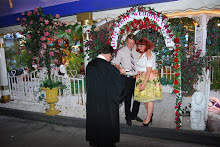




Peter Hujar was born in 1934 in Trenton NJ. He had been a fashion photographer in the 1950's and 1960's, but was mostly known for his work in New York City in the 1970's and 1980's. He is most associated with his black and white portraits of avant-gharde stars, but his subjects range from nudes, animals and night-time Manhattan. His background in fashion photography translates to his studio portraits. He first became big because of his work with male nudes and portraits from the gay scene, including portraits of transvestite performers like Divine and Candy Darling. He also shot other well known people like Susan Sontag, David Wojnarowicz and Robert Mapplethorpe, who was highly influenced by Hujar, as was Nan Goldin. His early work was more plain, shooting in black and white and using an 8x10 camera. Interestingly, Hujar did not find his subjects to be particular, so he made no effort to make them look so, unlike other photographers like Diane Arbus. His portraits have an interesting feeling to them. The subjects seem comfortable with him, and from what I've read, his subjects trusted him not to take advantage of them, which he didn't. His photo of Candy Darling before she died is haunting yet beautiful, as she lays on her hospital bed, surrounded by dark flowers with a single rose on her sheet. She still wears heavy makeup and her hair is done up, even though she is soon to die from bone cancer. He also shot Robert Mapplethorpe masturbating , naked on a bed, as well as Cookie Mueller, who, as one site put it: "is seen in a 1981 portrait, one more damaged personality coolly appraising the man behind the camera while revealing the vulnerabilities and dilemmas of her own condition. Mueller was to die, like many of Hujar’s subjects – and like Hujar himself – during the Aids epidemic that began to sweep New York in the late 1980s. " Hujar was an important photographer in that he bridged the gap between the New York art scene of the 1960's, which was characterized by Andy Warhol's Factory, and the people who came about in the 1970s, suck as David Wojnarowicz. Hujar's night photography is also notable, and that work has been compared to Brassai and Weegee. Another quote I found gives some context to his urban landscape work: "His urban landscapes reflect the condition of the city in the mid1970s, when New York was suffering in the wake of the oil crisis and when downtown was notorious as a playground of criminals and gay hustlers. His photograph of the Woolworth Building in 1976 is a subtle study of mystery and memory; but his shots of the deserted streets of the meat-packing district and other abandoned areas offer the kind of imagery of physical ruination to which he was frequently drawn. " Hujar did not receive much recognition during his lifetime, but his work has become more popular following his death in 1987.

No comments:
Post a Comment